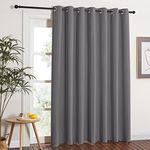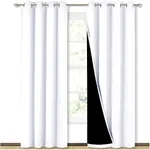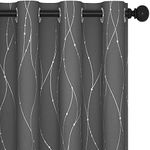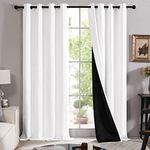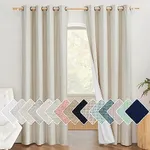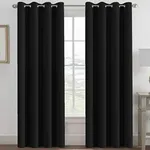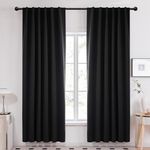Buying Guide for the Best Thermal Curtains
Choosing the right thermal curtains can make a big difference in your home's comfort and energy efficiency. Thermal curtains are designed to help regulate indoor temperatures by blocking heat loss in winter and keeping heat out in summer. When shopping for thermal curtains, it's important to look beyond just the color and style. Understanding the key features will help you select curtains that best fit your needs, whether you're looking to save on energy bills, reduce noise, or simply create a cozier space.Material and Fabric LayersThe material and the number of fabric layers in thermal curtains are crucial because they determine how well the curtains insulate your windows. Most thermal curtains have multiple layers, including a decorative fabric, a thermal lining, and sometimes a blackout layer. Single-layer curtains offer basic insulation, while double or triple-layer curtains provide better temperature control and noise reduction. If you live in a region with extreme temperatures or want maximum insulation, opt for curtains with more layers. For milder climates or less critical rooms, a single or double layer may be sufficient.
Thermal Insulation RatingThermal insulation rating refers to how effectively the curtains can block heat transfer. This is often described in terms like 'R-value' or simply as 'thermal efficiency.' Higher ratings mean better insulation. If your main goal is to reduce heating and cooling costs, look for curtains with a higher thermal rating. For rooms that don't need as much temperature control, a moderate rating will do the job.
Blackout CapabilityBlackout capability indicates how much light the curtains can block. While not all thermal curtains are blackout, many combine both features. Full blackout curtains are ideal for bedrooms, nurseries, or media rooms where you want to block out sunlight completely. Partial blackout or room-darkening curtains are suitable for living rooms or spaces where you want some natural light but still need insulation.
Size and CoverageThe size and coverage of your curtains are important because thermal curtains work best when they fully cover the window and extend beyond the frame. This prevents drafts and heat leaks. Measure your windows carefully and choose curtains that are wider and longer than the window itself. For maximum effectiveness, the curtains should touch the floor and overlap the window edges by several inches.
Ease of Installation and MaintenanceEase of installation and maintenance refers to how simple it is to hang and care for the curtains. Some thermal curtains come with grommets or rod pockets for easy hanging, while others may require hooks or special hardware. Consider how often you'll need to wash the curtains—machine-washable options are more convenient for regular cleaning. If you prefer low-maintenance options, look for curtains that are easy to remove and rehang.
Noise ReductionNoise reduction is an added benefit of some thermal curtains, thanks to their thick, multi-layered construction. If you live in a noisy area or want to create a quieter environment, look for curtains that specifically mention soundproofing or noise reduction. The thicker and denser the curtain, the better it will be at dampening outside sounds.
